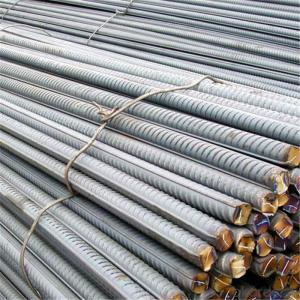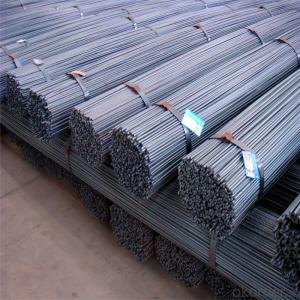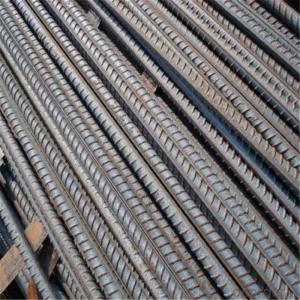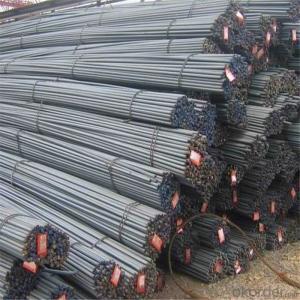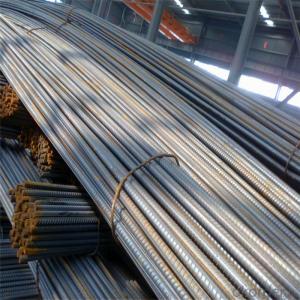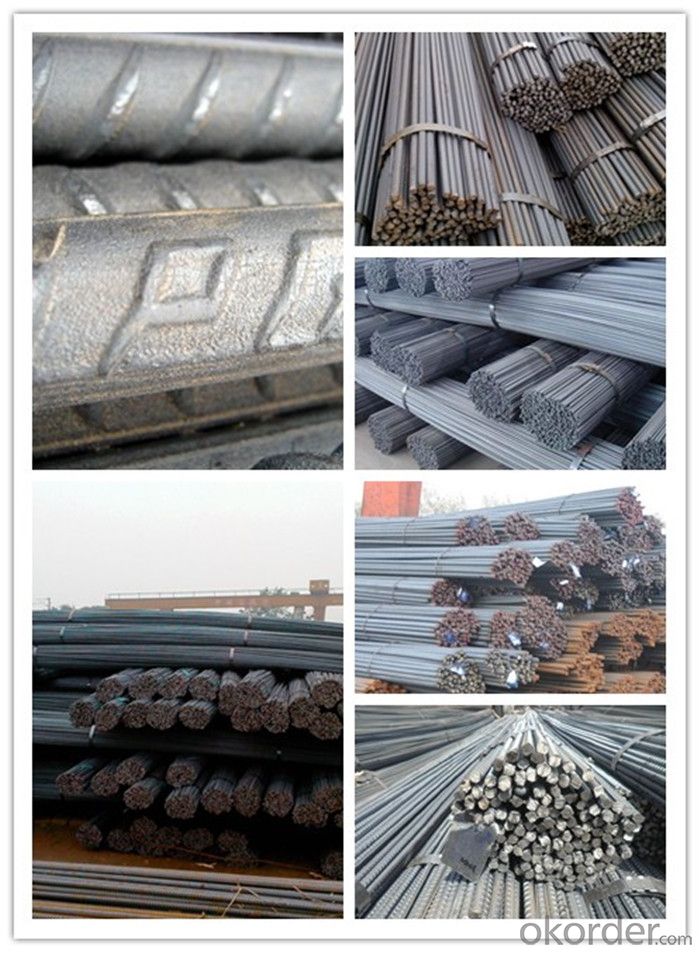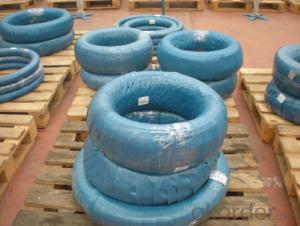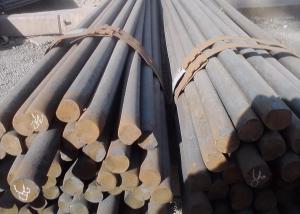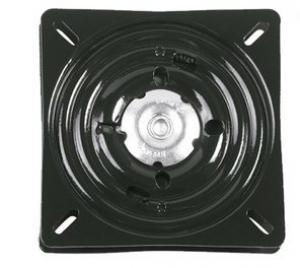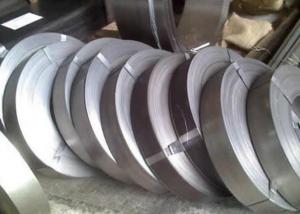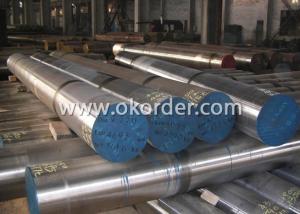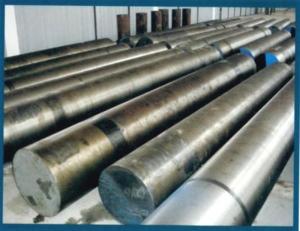Metallic Material Steel Iron Rods for Construction Concrete
- Loading Port:
- Tianjin
- Payment Terms:
- TT or LC
- Min Order Qty:
- 100 m.t.
- Supply Capability:
- 500000 m.t./month
OKorder Service Pledge
OKorder Financial Service
You Might Also Like
Item specifice
Metallic Material Steel Iron Rods for Construction Concrete
Description of Metallic Material Steel Iron Rods
1, Diameter: 5.5mm-10mm Metallic Material Steel Iron Rods
10m- 40mm Metallic Material Steel Iron Rods
2, Length: 6m, 9m, 12m or customized
3, Standard: GB, ASTM, AISI, SAE, DIN, JIS, EN
OEM technology - send detailed technical parameters for accurate quotation.
2, Produce Process: smelt iron - EAF smelt billet - ESR smelt billet -
hot rolled or forged to get the steel round bar and plate
3, Heat Treatment: annealing, normalizing, tempering, quenching
4, Surface Treatment: Black
5, Quality Assurance: We accept third party inspection for all orders.
You can ask testing organizations such as SGS, BV, etc. to test our products before shipping.
Chemical Composition of Metallic Material Steel Iron Rods
Grade | Technical data of the original chemical composition(%) | |||||
Reinforcing steel bar HRB335 | C | Mn | Si | S | P | B |
≤0.25 | ≤1.60 | ≤0.80 | ≤0.045 | ≤0.045 | >0.0008 | |
Physics Capability | ||||||
Yield Strength(N/cm2) | Tensile Strength(N/cm2) | Elongation(%) | ||||
≥ 335 | ≥490 | ≥16 | ||||
Reinforcing steel bar HRB400 | C | Mn | Si | S | P | B |
≤0.25 | ≤0.16 | ≤0.80 | ≤0.045 | ≤0.045 | 0.04-0.12 | |
Physics Capability | ||||||
Yield Strength(N/cm2) | Tensile Strength(N/cm2) | Elongation(%) | ||||
≥ 400 | ≥ 570 | ≥ 14 | ||||
Products Show of Metallic Material Steel Iron Rods
Company Information
CNBM International Corporation is the most important trading platform of CNBM group.
Whith its advantages, CNBM International are mainly concentrate on Cement, Glass, Iron and Steel, Ceramics industries and devotes herself for supplying high qulity series of refractories as well as technical consultancies and logistics solutions.


F A Q
1, Your advantages?
professional products inquiry, products knowledge train (for agents), smooth goods delivery, excellent customer solution proposale
2, Test & Certificate?
SGS test is available, customer inspection before shipping is welcome, third party inspection is no problem
3, Factory or Trading Company?
CNBM is a trading company but we have so many protocol factories and CNBM works as a trading department of these factories. Also CNBM is the holding company of many factories.
4, Payment Terms?
30% TT as deposit and 70% before delivery.
Irrevocable L/C at sight.
5, Trading Terms?
EXW, FOB, CIF, FFR, CNF
6, After-sale Service?
CNBM provides the services and support you need for every step of our cooperation. We're the business partner you can trust.
For any problem, please kindly contact us at any your convenient time.
We'll reply you in our first priority within 24 hours.
- Q:What are the common defects found in special steel production?
- Some common defects found in special steel production include: 1. Inclusions: These are impurities or foreign materials that are trapped within the steel during the manufacturing process. Inclusions can weaken the steel and reduce its overall quality and performance. 2. Segregation: Segregation refers to the uneven distribution of elements within the steel. This can occur when there are fluctuations in temperature or composition during the production process. Segregation can lead to inconsistencies in the steel's mechanical properties, making it less reliable. 3. Cracks: Cracks can occur in special steel production due to various reasons, such as improper cooling or excessive stress during the manufacturing process. Cracks can significantly weaken the steel, making it more prone to failure. 4. Decarburization: Decarburization is the loss of carbon from the surface of the steel, usually caused by exposure to high temperatures or oxidizing environments. This can reduce the steel's hardness and strength, compromising its performance. 5. Laminations: Laminations are layers or sheets that can form within the steel due to improper rolling or forging techniques. These layers can weaken the steel and potentially cause it to fail under stress. 6. Dimensional variations: Special steel production requires precise control of dimensions to meet specific requirements. However, dimensional variations can occur due to factors like inconsistent cooling or improper machining. These variations can affect the fit, function, and overall performance of the steel components. 7. Non-uniform microstructure: Inconsistent cooling rates or other processing factors can lead to a non-uniform microstructure in the steel. This can result in variations in hardness, strength, and other mechanical properties, affecting the overall quality of the steel. It is important for manufacturers to have stringent quality control measures in place to detect and minimize these defects during special steel production. Regular inspections, testing, and adherence to industry standards can help ensure that the final product meets the desired specifications and is free from common defects.
- Q:What are the different inspection methods used for special steel?
- There are several inspection methods used for special steel, including visual inspection, magnetic particle inspection, ultrasonic inspection, and dye penetrant inspection. Visual inspection involves examining the steel for any surface defects or irregularities. Magnetic particle inspection uses magnetic fields and iron particles to detect any cracks or defects in the steel. Ultrasonic inspection involves sending high-frequency sound waves through the steel to identify any internal flaws or defects. Dye penetrant inspection involves applying a colored liquid to the steel's surface, which seeps into any cracks or defects, revealing their presence. These methods help ensure the quality and integrity of special steel products.
- Q:How is mold steel used in the production of plastic injection molds?
- Mold steel is commonly used in the production of plastic injection molds due to its high durability and resistance to wear and tear. It is used to create the main components of the mold, such as the cavity and core, which are responsible for shaping the plastic material. Mold steel provides the necessary hardness and strength to withstand the high pressures and temperatures involved in the injection molding process. Additionally, its excellent machinability allows for precise and intricate mold designs, ensuring the production of high-quality plastic parts.
- Q:What are the challenges in machining special steel alloys?
- Special steel alloys pose several challenges when it comes to machining, primarily due to their unique properties and characteristics. The first major challenge is their high hardness, which is often enhanced through heat treatment to improve mechanical properties. As a result, traditional cutting tools wear out quickly or become dull, making it difficult to machine these alloys. Additionally, the high hardness increases the risk of tool breakage, leading to frequent tool changes and increased production downtime. Another challenge is the presence of abrasive elements in special steel alloys, such as chromium, tungsten, or vanadium. These elements can cause rapid tool wear and degradation, resulting in reduced cutting tool life and higher machining costs. Moreover, if not managed properly during the machining process, these abrasive elements can lead to poor surface finish and dimensional accuracy. Furthermore, special steel alloys have low thermal conductivity, making it challenging to dissipate the heat generated during machining. This can result in high temperatures at the cutting zone, causing thermal expansion and distortion of the workpiece. The heat also affects the cutting tool, reducing its efficiency and lifespan. Effective heat management is crucial to prevent workpiece deformation and maintain dimensional accuracy. Moreover, these steel alloys are prone to work hardening, meaning they become harder and more difficult to cut as the machining process progresses. Work hardening leads to increased cutting forces, tool wear, and reduced surface finish. To overcome this challenge, machining parameters such as cutting speed, feed rate, and depth of cut must be carefully optimized to avoid excessive work hardening. In conclusion, machining special steel alloys involves overcoming challenges such as high hardness, abrasive elements, low thermal conductivity, and work hardening. To address these challenges effectively, manufacturers need to use specialized cutting tools, efficient cooling and lubrication systems, optimize machining parameters, and carefully select machining strategies. By doing so, accurate and efficient machining of special steel alloys can be achieved.
- Q:How does precipitation hardening enhance the strength of special steel?
- Precipitation hardening is a heat treatment process that enhances the strength of special steel by creating small, uniformly dispersed particles within the metal matrix. These particles act as obstacles to dislocation movement, making it more difficult for them to slide past each other and deform the material. This results in increased strength, hardness, and resistance to wear and fatigue, making the steel suitable for various demanding applications.
- Q:How does special steel contribute to the aerospace turbine industry?
- Special steel plays a crucial role in the aerospace turbine industry as it offers exceptional strength, corrosion resistance, and high-temperature stability required for the demanding operating conditions of turbine components. It enables the production of turbine blades, discs, and other critical parts that can withstand extreme temperatures and stresses, ensuring optimal performance and safety in aircraft engines. Additionally, special steel's excellent fatigue resistance and ability to retain mechanical properties at elevated temperatures contribute to enhanced fuel efficiency and durability, ultimately advancing the overall efficiency and reliability of aerospace turbines.
- Q:Can special steel be used in the medical field?
- Yes, the medical field utilizes special steel. Special steel alloys, including but not limited to stainless steel, find extensive application in medical and surgical instruments, implants, and equipment. Stainless steel is selected for its remarkable resistance to corrosion, exceptional strength, and enduring durability. It is commonly employed in surgical instruments like scalpels, forceps, and needles, as well as in orthopedic implants like bone screws and plates. Moreover, special steel alloys are employed in the fabrication of medical equipment such as MRI machines and X-ray tables, where high strength and magnetic properties are imperative. In summary, special steel plays a pivotal role in the medical field owing to its distinctive characteristics and capacity to meet stringent criteria for hygiene, safety, and dependability.
- Q:What are the main applications of special steel in the automotive electrical systems?
- Special steel is commonly used in automotive electrical systems for various applications, including the production of electrical connectors, terminals, and other components. These materials offer excellent conductivity, corrosion resistance, and high temperature stability, ensuring reliable and efficient performance in demanding environments. Additionally, special steel can be used in the manufacturing of sensors, switches, and relays, providing durability, precision, and enhanced safety features in automotive electrical systems.
- Q:How is creep-resistant steel used in the production of power plant components?
- Creep-resistant steel is used in the production of power plant components due to its high resistance to deformation under high temperatures and prolonged exposure to stress. This type of steel is crucial in power plants as it helps maintain the structural integrity of components such as boilers, turbines, and pipes, which are subjected to extreme heat and pressure. By using creep-resistant steel, power plants can ensure the safe and efficient operation of their equipment, reducing the risk of failures and increasing overall reliability.
- Q:Can special steel be used in the production of jewelry?
- Indeed, it is possible to utilize special steel in the fabrication of jewelry. While precious metals such as gold, silver, and platinum are frequently employed in the art of jewelry making, there is an emerging inclination towards incorporating unconventional materials like special steel. The distinctive attributes of special steel, namely its durability, strength, and resistance to corrosion, allow for the creation of exquisite and intricate designs that cater to a contemporary and bold aesthetic. Moreover, special steel jewelry often presents a more economical alternative to traditional precious metal jewelry, rendering it a favored choice for individuals seeking a distinctive and budget-conscious option. Nevertheless, it is crucial to bear in mind that special steel jewelry necessitates proper care and maintenance to prevent tarnishing and scratching.
1. Manufacturer Overview |
|
|---|---|
| Location | |
| Year Established | |
| Annual Output Value | |
| Main Markets | |
| Company Certifications | |
2. Manufacturer Certificates |
|
|---|---|
| a) Certification Name | |
| Range | |
| Reference | |
| Validity Period | |
3. Manufacturer Capability |
|
|---|---|
| a)Trade Capacity | |
| Nearest Port | |
| Export Percentage | |
| No.of Employees in Trade Department | |
| Language Spoken: | |
| b)Factory Information | |
| Factory Size: | |
| No. of Production Lines | |
| Contract Manufacturing | |
| Product Price Range | |
Send your message to us
Metallic Material Steel Iron Rods for Construction Concrete
- Loading Port:
- Tianjin
- Payment Terms:
- TT or LC
- Min Order Qty:
- 100 m.t.
- Supply Capability:
- 500000 m.t./month
OKorder Service Pledge
OKorder Financial Service
Similar products
New products
Hot products
Related keywords
